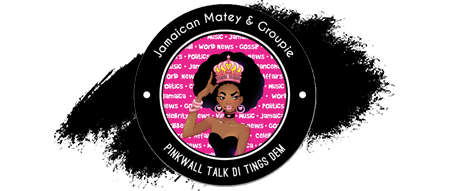Sherine Virgo was excited when her 5-year-old daughter was accepted to a prestigious public school in the Jamaican capital. But when the mother attended an orientation over the summer, the principal informed her that she would have to cut off her daughter’s dreadlocks.

“I said, ‘I will not be cutting her hair,’ ” Virgo recounted. The principal explained that the no-dreadlocks policy was a matter of hygiene and avoiding lice in the school, the mother recalled.
“Here you’re thinking that this should not be a problem,” Virgo said. “We are just trying to get her an education.”
Virgo’s daughter will start classes this week at Kensington Primary School with her dreadlocks intact after a legal battle that has gone all the way to the Supreme Court of this Caribbean island.
Earlier this month, the court handed down an injunction ordering that the girl – identified in court documents only as “Z,” because she is a minor – be permitted to attend school. It was a first step in a constitutional challenge by a human-rights group, Jamaicans for Justice, that could bring an end to the practice of barring children with dreadlocks or “natural” hair from school. Jamaicans also think it could help diminish the historically discriminatory treatment of Rastafarians, who wear their hair in dreadlocks as part of their culture.
The human-rights group is challenging the school’s prohibition on dreadlocks by arguing that it violates the child’s constitutional rights – including the right to an education, freedom of speech and freedom from official discrimination. The case will be heard in January.
“This is an important first victory that will allow the child to attend school and receive an education which she has a constitutional right to. Without this court order, she faced the prospect of being denied an education simply for refusing to remove her dreadlocks,” the executive director of Jamaicans for Justice, Rodje Malcolm, said in a statement.
Rastafarians are part of a political and religious movement founded in the 1930s in Jamaica that drew from Revival, Christian and African faiths. The movement became popular in part as a reaction to British colonial rule, said Erin MacLeod, a Rastafari scholar who teaches at Vanier College in Montreal. Rastafarians are believed to make up about 2 percent of the island’s population. One of the best-known advocates of the faith was the Jamaican musician Bob Marley.
Virgo and her daughter do not consider themselves Rastafarians, but wear dreadlocks as a way to express their identity.
“It is our natural hair, it is our nation’s culture and it what God has blessed us with,” Virgo said. She declined to provide her daughter’s name, citing a desire for privacy for the girl.
The ban on dreadlocks appears to be a practice adopted by some schools, but is not in the law.
The court challenge is against both the school and the Ministry of Education. Calls and emails to the ministry seeking comment were not answered. A spokesman at the prime minister’s office declined to comment, referring the matter to the ministry. Attempts to reach officials at Kensington Primary School were unsuccessful.
Since the injunction was issued, the Ministry of Education has released intricate guidelines for students’ hairstyles, including permission for females to wear dreadlocks if they are neat.
Carolyn Cooper, a retired professor of cultural studies at the University of the West Indies, said Rastafarians have experienced discrimination for decades.
“This is part of a whole prejudice that has historical antecedents,” she said.
The Rastafari movement was initially regarded as a subversive anti-colonial force by the government. Suspicion of its members lingered even after Jamaica became independent in 1962.
In 1963, 10 people were killed in a confrontation between police and Rastafarians in the community of Coral Gardens in Montego Bay. Hundreds of Rastafarians were subsequently jailed and some were forcibly shorn of their hair. Jamaica’s prime minister, Andrew Holness, earlier this year issued a formal apology for the crackdown and promised compensation.
The dreadlocks issue hasn’t just affected female students. In 2016, a 3-year-old Jamaican boy was expelled from school after his mother, Donna Amritt, refused to cut his hair.
“This is more than a gender-related issue, it is a racial issue,” said Amritt, adding that white children with long hair faced no similar requirement.
Damian Crawford is a senator from the opposition party People’s National Party. He has dreadlocks and has resisted pressure to cut them. “Covertly, even people who support me said I should trim (my dreadlocks) to ascend more rapidly,” he said

What a victory!! God bless parents who advocate for their youths daily !! (Not the ones wey scam and cuss matey and bleach and nuh work and live wid dem mumma, man, and kids and wey nuh work or enroll ina somebody school)
While i have no problem with people wearing their hair in dreadlocks, i also think parents should not force their child/children into something they are happy with.
Constant twisting of the hair encourages early hair loos and traction alopecia.
A nice afro, ribbon or clips will work magic for any little girl.